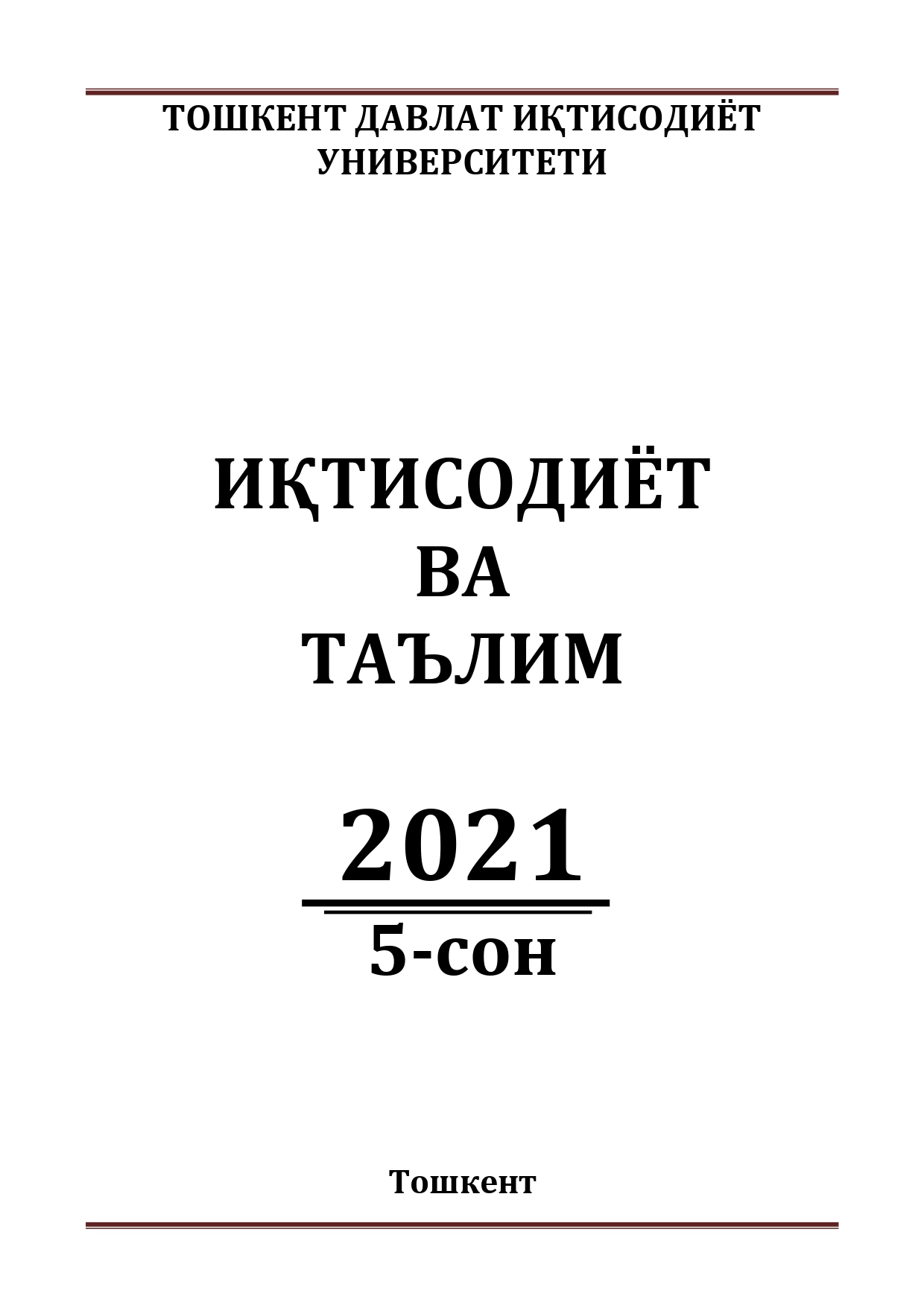Abstract
This article aims to identify the attributes that can be motivated smallholders to enter into contract farming schemes for the production and sale of tomatoes. They interviewed 197 volunteer smallholders were among six regions of Samarkand province. Discrete Choice Experiment and Conditional Logistic Regression Models applied to analyze the importance of contract design attributes and Willingness-to-accept. Output market and quality assurance uncertainties studies are more important than input market uncertainties. Smallholders are inclined to arrange the contract with buyers and full-input resources suppliers. The availability of written agreements for smallholders founded that to increase the readiness to enter into a contract scheme by 80.3% and fully input resources provision by 12.7%. Sorting, a month before and after payment and delivery to the buyer place attributes are negatively affected. The results pointed out interesting insights that smallholders would not be inclined to non-guaranteed price and market. They want to produce products on a contract basis with buyers and suppliers or entities to minimize risks and guarantee returns.
References
Decree of the President of the Republic of Uzbekistan No. PF-5199 of October 9, 2017 "On measures to radically improve the system of protection of the rights and legitimate interests of farmers, dehkan farms and householders, the efficient use of agricultural land".
Lem A., Bjørndal A., and T. Lappo, Economic analysis of supply and demand for food up to 2030, vol. 1089, no. 1089. 2014.
I. Bobojonov and R. Teuber, “Participation in formal and informal cooperation and its effect on productivity in Central Asia: Empirical evidence from Uzbekistan,” Int. Conf. Agric. Econ. Vancouver, pp. 1–15, 2018.
T. Reardon et al., “Rapid transformation of food systems in developing regions: Highlighting the role of agricultural research & innovations,” Agric. Syst., vol. 172, no. December 2017, pp. 47–59, 2019, doi: 10.1016/j.agsy.2018.01.022.
P. Simmons, “Overview of Smallholder Contract Farming in Developing Countries,” Agric. Dev. Econ. Div. Food Agric. Organ. United Nations (FAO--ESA), Work. Pap., p. 27, 2002, [Online]. Available: http://search.proquest.com/docview/56908381? accountid=13042%5 Cnhttp://oxfordsfx.hosted.exlibrisgroup.com/oxford?url_ver=Z39.88-2004&rft_val_fmt=info:ofi/fmt:kev: mtx:journal&genre=preprint&sid=ProQ: ProQ:econlitshell&atitle=Overview+of+Smallholder+Contract+.
G. K. Abebe, J. Bijman, R. Kemp, O. Omta, and A. Tsegaye, “Contract farming configuration: Smallholders’ preferences for contract design attributes,” Food Policy, vol. 40, pp. 14–24, 2013, doi: 10.1016/j.foodpol.2013.01.002.
K. Otsuka, Y. Nakano, and K. Takahashi, “Contract Farming in Developed and Developing Countries,” Annu. Rev. Resour. Econ., vol. 8, no. 1, pp. 353–376, 2016, doi: 10.1146/annurev-resource-100815-095459.
B. Shankar, W. Posri, and T. Srivong, “A case study of a contract farming chain involving supermarkets and smallholders in Thailand,” Can. J. Dev. Stud., vol. 31, no. 1–2, pp. 137–153, 2010, doi: 10.1080/02255189.2010.9669335.
E.-M. Meemken and M. F. Bellemare, “Smallholder farmers and contract farming in developing countries,” Proc. Natl. Acad. Sci., vol. 117, no. 1, pp. 259–264, 2020.
FAO, “The economic lives of smallholder farmers,” FAO Food Agric. Organ. United Nations, p. 39, 2015, [Online]. Available: http://www.macrothink.org/journal/index.php/rae/article/view/6320%0Ahttp://www.upov.int/edocs/mdocs/upov/en/upov_sym_ge_11/upov_sym_ge_11_10.pdf%0Ahttp://ajae.oxfordjournals.org/cgi/doi/10.2307/1241587%0Awww.iosrjournals.org%0Ahttp://link.springer.com/10.
P. Bogetoft and H. B. Olesen, “Ten rules of thumb in contract design: Lessons from Danish agriculture,” Eur. Rev. Agric. Econ., vol. 29, no. 2, pp. 185–204, 2002, doi: 10.1093/eurrag/29.2.185.
N. Key and D. Runsten, “Contract farming, smallholders, and rural development in Latin America: The organization of agroprocessing firms and the scale of outgrower production,” World Dev., vol. 27, no. 2, pp. 381–401, 1999, doi: 10.1016/S0305-750X(98)00144-2.
P. E. Green and V. Srinivasan, “Conjoint analysis in marketing: new developments with implications for research and practice,” J. Mark., vol. 54, no. 4, pp. 3–19, 1990.
O. Masakure and S. Henson, “Why do small-scale producers choose to produce under contract? Lessons from nontraditional vegetable exports from Zimbabwe,” World Dev., vol. 33, no. 10, pp. 1721–1733, 2005, doi: 10.1016/j.worlddev.2005.04.016.
C. B. Barrett, M. E. Bachke, M. F. Bellemare, H. C. Michelson, S. Narayanan, and T. F. Walker, “Smallholder participation in contract farming: Comparative evidence from five countries,” World Dev., vol. 40, no. 4, pp. 715–730, 2012, doi: 10.1016/j.worlddev.2011.09.006.
M. Fafchamps and B. Minten, “Property rights in a flea market economy,” Econ. Dev. Cult. Change, vol. 49, no. 2, pp. 229–267, 2001, doi: 10.1086/452501.
E. de J. Salas-Méndez et al., “Application of edible nanolaminate coatings with antimicrobial extract of Flourensia cernua to extend the shelf-life of tomato (Solanum lycopersicum L.) fruit,” Postharvest Biol. Technol., vol. 150, no. June 2018, pp. 19–27, 2019, doi: 10.1016/j.postharvbio.2018.12.008.
D. McFadden, “Conditional logit analysis of qualitative choice behavior,” 1973, [Online]. Available: https://eml.berkeley.edu/reprints/mcfadden/zarembka.pdf.
M. Ryan, J. R. Kolstad, P. C. Rockers, and C. Dolea, “How to conduct a discrete choice experiment for health workforce recruitment and retention in remote and rural areas: a user guide with case studies,” The World Bank, 2012. [Online]. Available: https://www.who.int/hrh/resources/DCE_UserGuide_WEB.pdf?ua=1.
D. Campbell, “Willingness to pay for rural landscape improvements: Combining mixed logit and random-effects m odel,” J. Agric. Econ., vol. 58, no. 3, pp. 467–483, 2007, doi: 10.1111/j.1477-9552.2007.00117.x.
M. Barrowclough, K. A. Boys, and C. Carpio, “Benefits, challenges and trade-offs: Buyer and contract characteristics valued by small farm suppliers to wholesale marketing channels,” J. Agric. Resour. Econ., vol. 44, no. 3, pp. 605–623, 2019, doi: 10.22004/ag.econ.292334.
K. E. Train, Discrete choice methods with simulation, second edition, vol. 9780521766. 2009.
https://www.stat.uz/images/uploads/docs/qishloq_hojaligi_20.01.2021_uz.pdf

This work is licensed under a Creative Commons Attribution-ShareAlike 4.0 International License.
Copyright (c) 2021 Иқтисодиёт ва таълим
